| 17th century grave slab St Drostans kirk Aberdour |
|---|
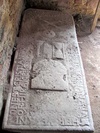
A 17th century grave slab with finely carved lettering and memento mori symbols in a primitive style. More Information |
| 18th cent tomb slab St Drostans Aberdour |
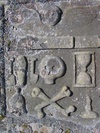
A stone slab carved with memento mori in a more primitive style than the nearby Clyne grave. The inscription is no longer legible. More Information |
| Aberdour cave graffiti |

An assemblage of graffiti mostly consisting of simply painted names and dates but including the illustrated iconographic piece, showing a hound's head from an unusual straight on perspective. More Information |
| Aberdour Dovecot |
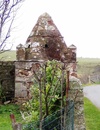
Dovecot; small square ashlar with some pinnings; stone nesting boxes; has squat octagonal gablet pinnacles; two rat ledges; possibly 16th/17thC origin; restored 1981. More Information |
| Clyne grave 18th century grave slab St Drostans kirk Aberdour |
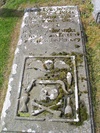
A nicely carved 18th century grave slab with classic memento mori symbols in a slightly more sophisticated style than some examples. More Information |
| Egypt Farm Sign |

This popular cut out sign of a camel has been through more than one incarnation while keeping to essentially the same design More Information |
| New Aberdour Millennium Memorial |
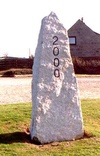
A minimalist monument consisting of a menhir of undressed granite, inscribed with the numerals 2000, recalling the megaliths of prehistory. More Information |
| New Aberdour War Memorial |
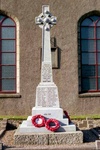
Typical village war memorial in the form of a Celtic cross, in a style that through the 19th cent Celtic revival ultimately derives from the circa 9th cent. crosses of Iona. These in turn draw on manuscript art and Pictish sculpture and metalwork. More Information |
| Saint Drostans Well |
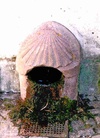
A Victorian pink granite basin and cover carved with a scallop shell motif, for a spring traditionally associated with the dark age St Drostan who is supposed to have landed on this beach before evangelising the Buchan area in Pictish times. More Information |
| Tomb of George Baird of Auchmeddan, Old Aberdour |

A 16th century grave slab relocated to the wall of the ruined St Drostan's More Information |
This content was submitted by external contributors and does not necessarily reflect the views of the University of Aberdeen.
